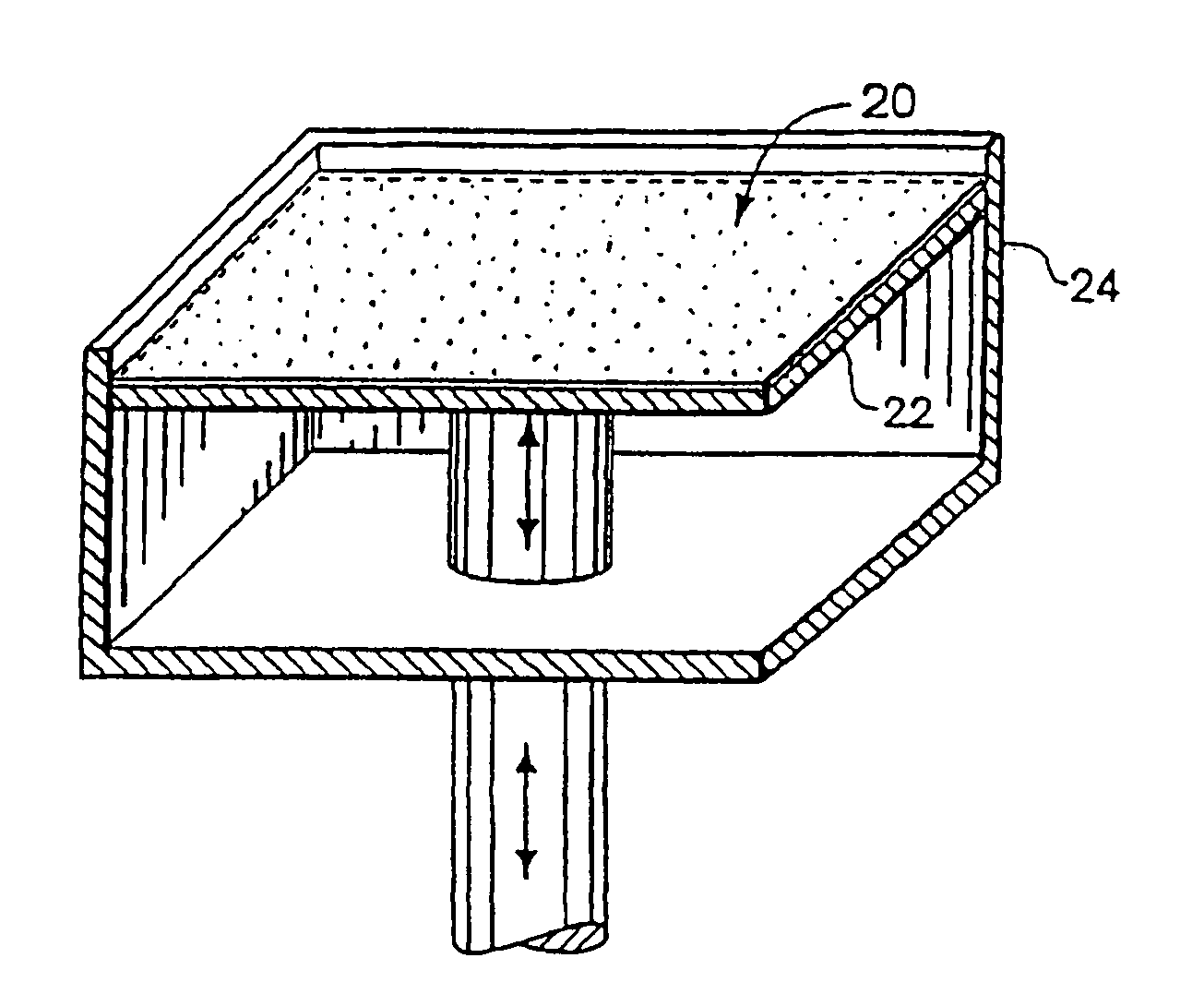Material systems and methods of three-dimensional printing
a three-dimensional printing and material system technology, applied in the direction of additive manufacturing processes, manufacturing tools, wood veneer joining, etc., can solve the problems of slow method, high cost of selective laser sintering process, and less expensive binder printing equipmen
- Summary
- Abstract
- Description
- Claims
- Application Information
AI Technical Summary
Benefits of technology
Problems solved by technology
Method used
Image
Examples
example 1
[0130]Line tests were performed to determine suitable combinations of anionic starch, cationic starch, and polyelectrolyte. A particulate material was prepared to include a cationic starch and an anionic starch blended in a 1:1 mixture, by weight. A fluid mixture containing an aqueous binder and about 3% of a polyelectrolyte was prepared and dispensed onto the powder. A syringe was used to squirt the polyelectrolyte mixture onto the starch mixture. Suitable material systems are shown below in Table 1.
[0131]
TABLE 1LineCationicAnionicTestStarchStarchPolyelectrolyteResultsApollo 4280Astro Gum 3010PMAA−PAA−PSS++PDAC−Pencat 600Astro Gum 3010PMAA−PAA−PSS++PDAC−Apollo 4280Astro Gum 21PMAA+PAA−PSS++PDAC−Pencat 600Astro Gum 21PMAA+PAA−PSS++PDAC−
[0132]Those material system combinations with positive results were further tested on a three-dimensional printing system. Those material systems with negative results were further optimized.
example 2
[0133]Line tests were performed on a material system in which the particulate material was glass beads having an aminosilane coupling agent on the exterior surface. The fluid material was an aqueous solution containing about 2% potassium sulfate and about 3% of either PMAA or PAA (as shown below in Table 2). The pH of the fluid was adjusted to about 5 by adding a 1 Molar solution of sodium hydrogen sulfate. A syringe was used to squirt the fluid mixture onto the particulate mixture.
[0134]The composition of the particulate mixture and fluid mixture are shown below in Table 2. The resulting lines were cohesive and were lifted out of the bed of glass beads without breaking.
[0135]
TABLE 2BeadGlass beadsDiameter (μm)PolyelectrolyteSpheriglass, 2530-CP-0371PMAA71PAASpheriglass, 2227-CP-03119PMAA119PAA
example 3
[0136]Test bars were formed to evaluate the strength of a material system. ZB7™ stock binder from Z Corporation was printed onto a particulate mixture. The particulate mixture included polyanionic polystyrene sulfonate (PSS) (MW 70,000, available from Aldrich Chemicals, Milwaukee, Wis.) and a polycationic potato starch (available under the product name Unicat C3T from Kalamazoo Paper Chemicals, Kalamazoo, Mich.), and glass beads (available under the product name Spheriglass #2530(CP-03) and #2227(CP-03) from Potter Industries) or technical grade pumice (available from PTI Process Chemicals, Cary, Ill.). The glass beads were unreactive with the PSS, potato starch, and the aqueous fluid.
[0137]An electrostatic attraction between the PSS and starch was activated by the fluid, causing the materials to interact chemically to form an essentially solid article that included the glass beads or the pumice.
[0138]
TABLE 3Glass BeadPumiceUnicatDiameterParticle diameterPSSC3T(μm)(μm)52570126823790...
PUM
| Property | Measurement | Unit |
|---|---|---|
| mean diameter | aaaaa | aaaaa |
| mean diameter | aaaaa | aaaaa |
| mean diameter | aaaaa | aaaaa |
Abstract
Description
Claims
Application Information
 Login to View More
Login to View More - R&D
- Intellectual Property
- Life Sciences
- Materials
- Tech Scout
- Unparalleled Data Quality
- Higher Quality Content
- 60% Fewer Hallucinations
Browse by: Latest US Patents, China's latest patents, Technical Efficacy Thesaurus, Application Domain, Technology Topic, Popular Technical Reports.
© 2025 PatSnap. All rights reserved.Legal|Privacy policy|Modern Slavery Act Transparency Statement|Sitemap|About US| Contact US: help@patsnap.com



